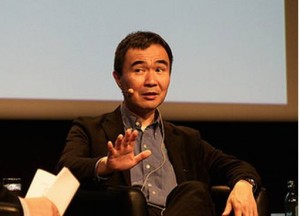
Dr. Satoshi Matsuoka, Tokyo Institute of Technology
In this video from EASC2016 in Stockholm, Satoshi Matsuoka from the Tokyo Institute of Technology presents: The Inevitable End of Moore’s Law.
“The so-called “Moore’s Law”, by which the performance of the processors will increase exponentially by factor of 4 every 3 years or so, is slated to be ending in 10-15 year timeframe due to the lithography of VLSIs reaching its limits around that time, and combined with other physical factors. This is largely due to the transistor power becoming largely constant, and as a result, means to sustain continuous performance increase must be sought otherwise than increasing the clock rate or the number of floating point units in the chips, i.e., increase in the FLOPS. The promising new parameter in place of the transistor count is the perceived increase in the capacity and bandwidth of storage, driven by device, architectural, as well as packaging innovations: DRAM-alternative Non-Volatile Memory (NVM) devices, 3-D memory and logic stacking evolving from VIAs to direct silicone stacking, as well as next-generation terabit optics and networks. The overall effect of this is that, the trend to increase the computational intensity as advocated today will no longer result in performance increase, but rather, exploiting the memory and bandwidth capacities will instead be the right methodology. However, such shift in compute-vs-data tradeoffs would not exactly be return to the old vector days, since other physical factors such as latency will not change. As such, performance modelling to account for the evolution of such fundamental architectural change in the post-Moore era would become important, as it could lead to disruptive alterations on how the computing system, both hardware and software, would be evolving towards the future. We are now in the process of launching such innovative projects for the future of computing in Japan.”
Satoshi Matsuoka has been a Full Professor at the Global Scientific Information and Computing Center (GSIC), a Japanese national supercomputing center hosted by the Tokyo Institute of Technology, since 2001. He received his Ph. D. from the University of Tokyo in 1993. He is the leader of the TSUBAME series of supercomputers, including TSUBAME2.0 which was the first supercomputer in Japan to exceed Petaflop performance and became the 4th fastest in the world on the Top500 in Nov. 2010, as well as the recent TSUBAME-KFC becoming #1 in the world for power efficiency for both the Green 500 and Green Graph 500 lists in Nov. 2013. He is also currently leading several major supercomputing research projects, such as the MEXT Green Supercomputing, JSPS Billion-Scale Supercomputer Resilience, as well as the JST-CREST Extreme Big Data. He has written over 500 articles according to Google Scholar, and chaired numerous ACM/IEEE conferences, most recently the overall Technical Program Chair at the ACM/IEEE Supercomputing Conference (SC13) in 2013. He is a fellow of the ACM and European ISC, and has won many awards, including the JSPS Prize from the Japan Society for Promotion of Science in 2006, awarded by his Highness Prince Akishino, the ACM Gordon Bell Prize in 2011, the Commendation for Science and Technology by the Minister of Education, Culture, Sports, Science and Technology in 2012, and recently the 2014 IEEE-CS Sidney Fernbach Memorial Award.




